TEXT AND PHOTOGRAPHS BY AMRITA. C. ROY
Bangalore, India
Rural Bengal, Mid-19th Century: A warm winter afternoon lulling everybody into a lazy post-lunch siesta. The lady of the house too, lay on the bed, musing about her next batch of sweets, feeling the taste of sandesh in her mouth. But the sweetness she dreamt of felt unfitting to be filled within formless lumps, as they normally were, and thus grew an endeavour over decades, or perhaps centuries, to give a more ornate structure to the fabled sweetmeats of Bengal. These efforts took different shapes and forms in clay, stone and wood, and became as indispensable to the process as the ingredients that went into these sweets. This revolution is known as the Chhaanch, Bangla for cast or mould, and has ‘shaped’ the Bengali’s obsession with sweetmeats for decades. They are mostly passed on as heirlooms within women in the family.
Sandesh making is an art on its own, but the Chhaanch adds another dimension to it. When the hand-kneaded sweetened cottage cheese, khova or grated coconuts make their way into these, they always emerge with a story. Be it for wishing newlyweds with carved messages like Shukhey thaako (Live Well), Aashirbaad (Be Blessed), or simply making daily consumption interesting with delicate fish or lotus patterns – every Sandesh gets its character from the Chhaanch.
Chhaanch making is, however, a laborious and intricate process, mostly employing terracotta for Sandesh and stone for Aam Shottwo or Aam Paapad. The ones made of stone are usually a derivative of the humble Shil-noda, the traditional flat mortar and pestle found in most traditional Bengali households. The only difference is that the ones employed for the Aam Shottwo are replete with decorative carvings. While I have never seen one of these in action, their existence and usage have been explained in vivid detail by the mothers of my family.
For making the terracotta Chhaanch – the clay must be kneaded into just the right texture, before painstakingly engraving or carving the shapes and patterns of one’s choice, with special handmade tools. The sizes usually vary from bite-sized to plate-sized, depending upon the need – or appetite in this case! This is followed by drying and baking them. The baked Chhaanch comes out hard and black as stone. The last step in the process involves soaking the Chhaanch in oil to make it ‘non-stick’. This is a more popular and commonly used Chhaanch.
I too, inherited these moulds from my mother during my wedding, who herself had inherited these from my Thaakuma, my paternal grandmother. My Thaakuma, in turn, had inherited some of these from her aunt who raised her in the Cumilla district of Bangladesh. It was there she grew up and was married to my Thakurdada. During the 1947 Partition, Thaakuma had to make her journey across the border to Kolkata alone, unassisted and unchaperoned. She was already a mother to a new-born at the time, and was accompanied by an extremely beautiful younger cousin, whose beauty had to be concealed in different ways due to all the unbridled violence. My extremely worried Thakurdada, who was employed with Tata Steel at Jamshedpur at the time, met them in Kolkata, and brought them home with him.
While my Thaakuma couldn’t carry much, a few Chhaanch made this perilous journey with her. In Jamshedpur, she made a few others over the years. In these few sentences spanning four generations, these humble Chhaanch have already made a 100-year journey through thick and thin. In spite of that and though they may be a bit rough around the edges due to the passage of time, they are still in a pristine condition to leave their mark.
The pictured Chhaanch define a very indelible part of my sweet childhood memories- from watching my mother and aunt shaping sweetmeats in them, to ultimately making my own, there has been no Dussehra, Diwali or Sankranti where my novice hands have not tried pulling the Sandesh out of the Chhaanch – breaking it sometimes, but succeeding at most.
Food should please all senses- this has been a motto of Bengali food preparation. Visual delight through shapes and positive messages was as important as taste and smell to these craftsmen and women in every household and eatery in Bengal. Aahaar’e Baahaar, or the art in food, is a way of life for Bengalis. You still can find handmade Chhaanch in Rural Bengal marketplaces, where a few remaining artisans still create and sell it. The popular form of Chhaanch available nowadays is made of wood; the Terracotta ones are rare, but finders keepers, I guess.
How to make Sandesh from Chhaanch: Prepare your dough of sweetmeat as you please. The mixture can have whatever you want – sweetened coconut, khova, or cottage cheese. But it has to be kneaded properly so that there should not be any lumps remaining in the mix, and it should be moist enough to bond. Clean up and dry the Chhaanch you intend to use. Brush up warm ghee or cooking oil against the decorated indented side of the Chhaanch and press the dough against it. Press it gently in and remove the excess material. Once done, slowly but steadily remove the dough from the Chhaanch and you have your Sandesh. It takes a bit of practice (as with everything) to remove the Sandesh without breaking it, but once your dough is firm enough and fingers nimble enough – no one can stop you from carrying the sweet imprints to people’s hearts.

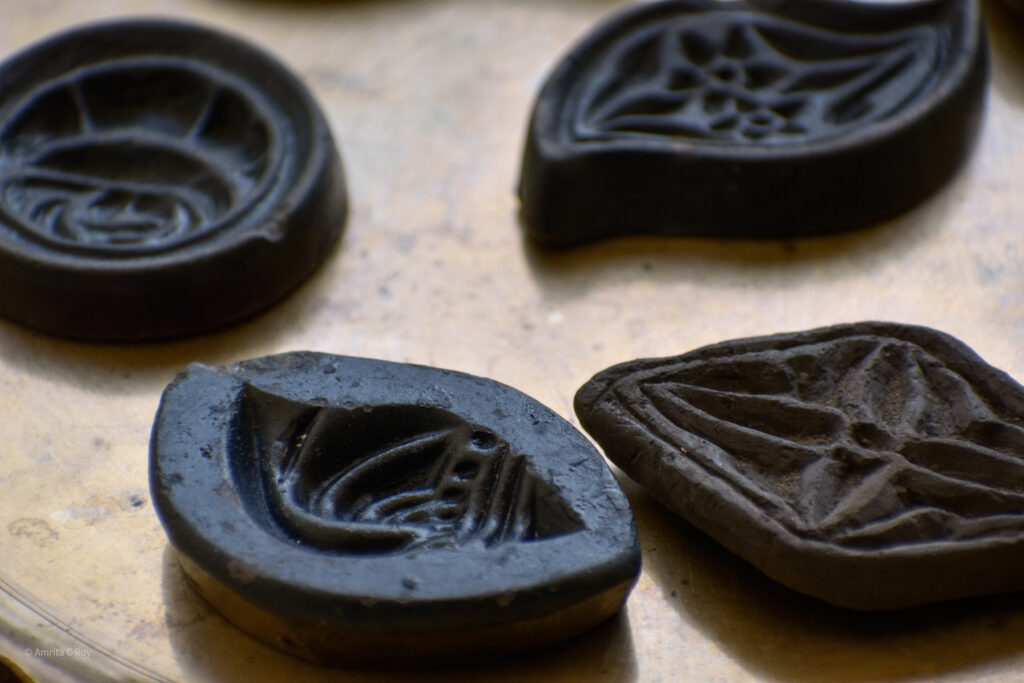
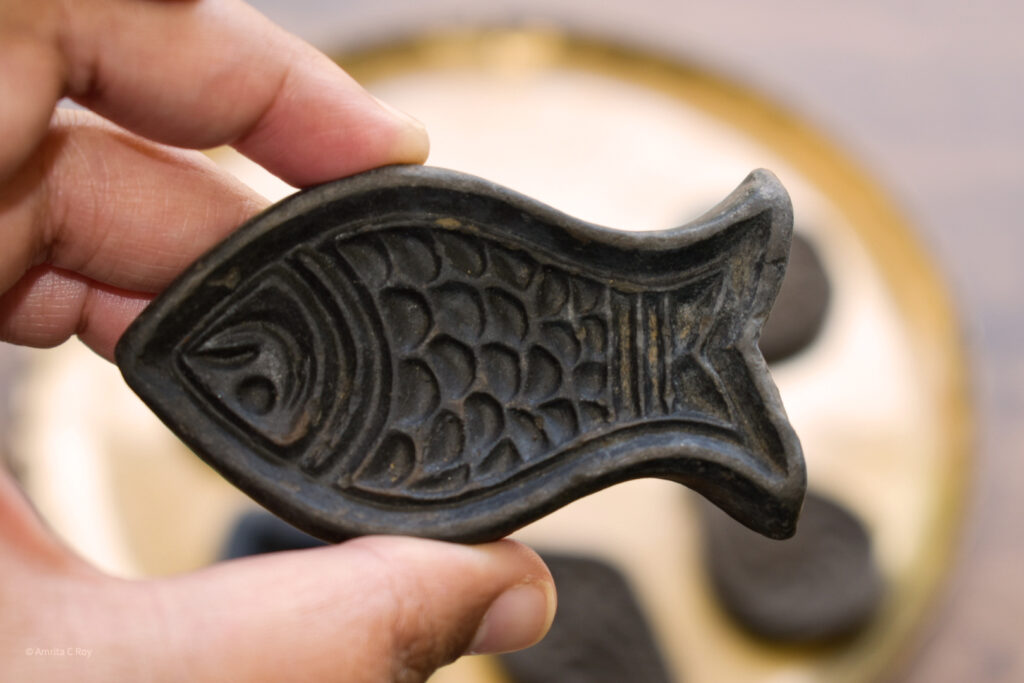

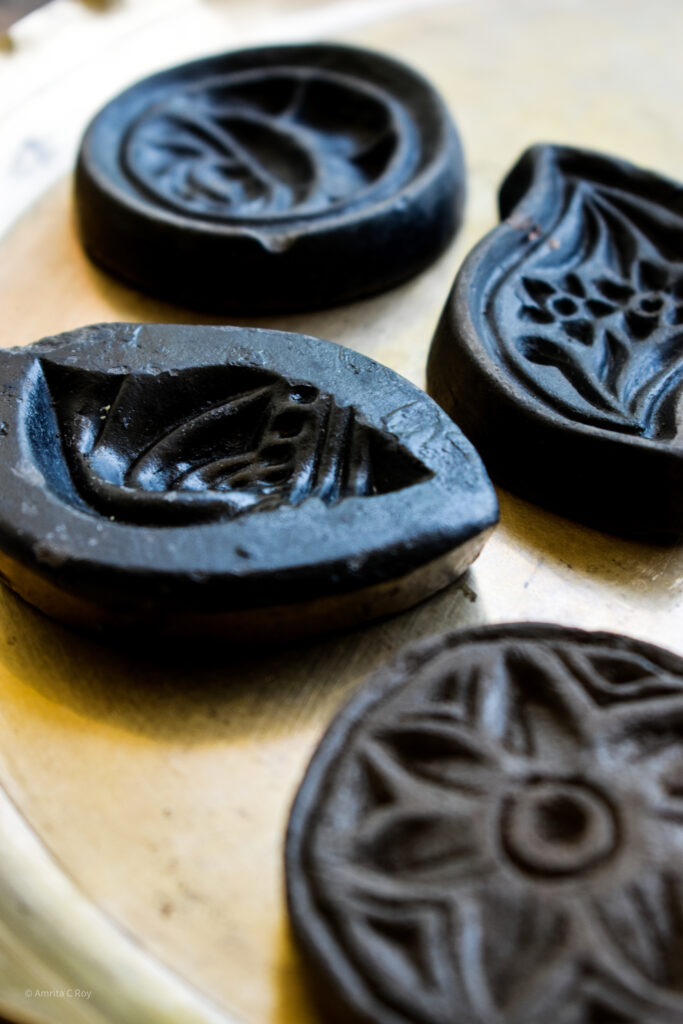

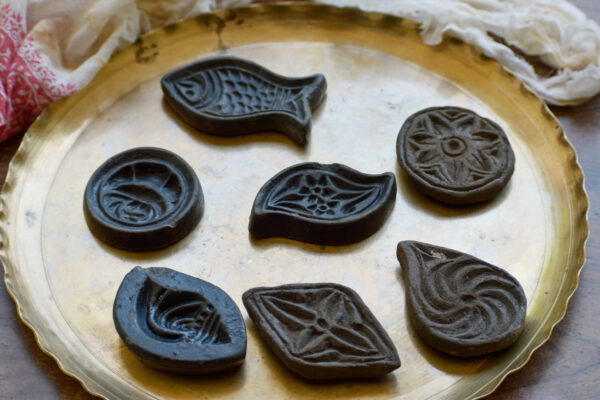
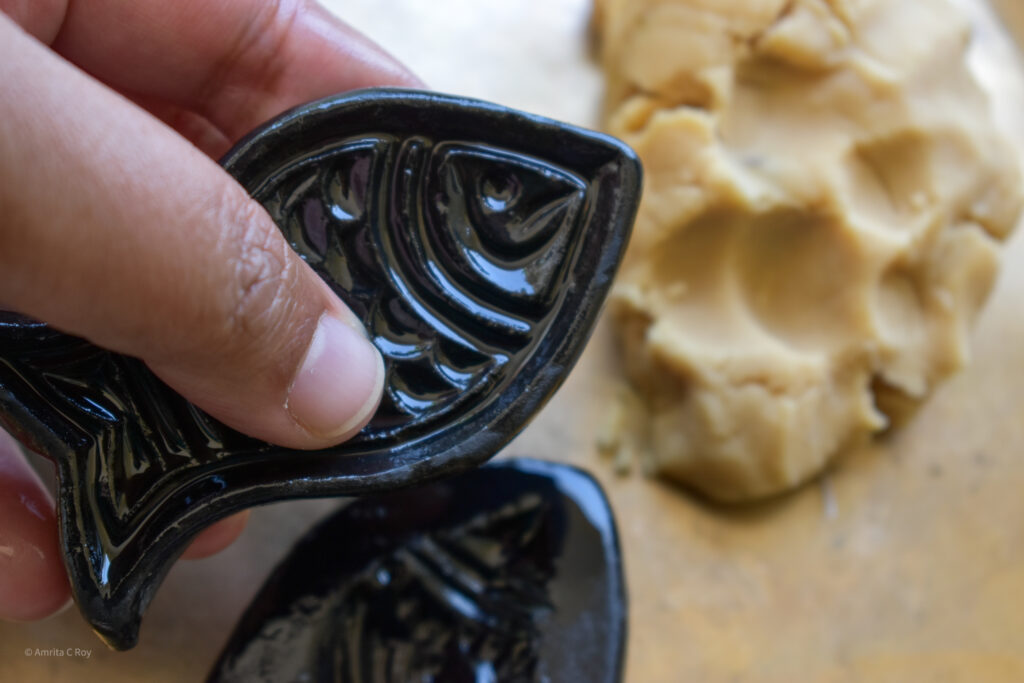
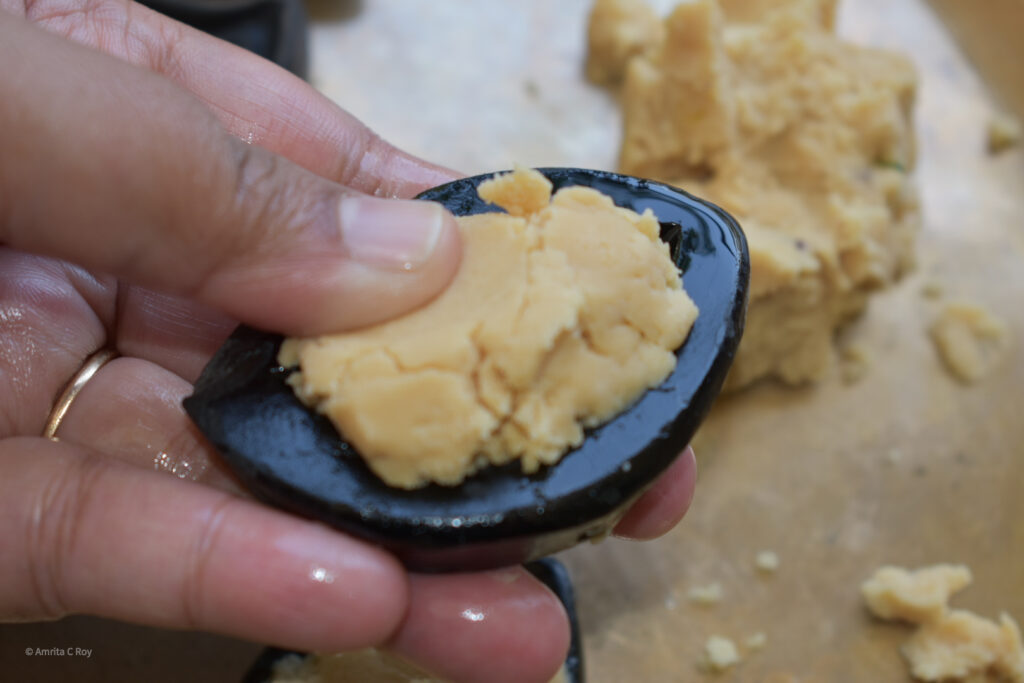
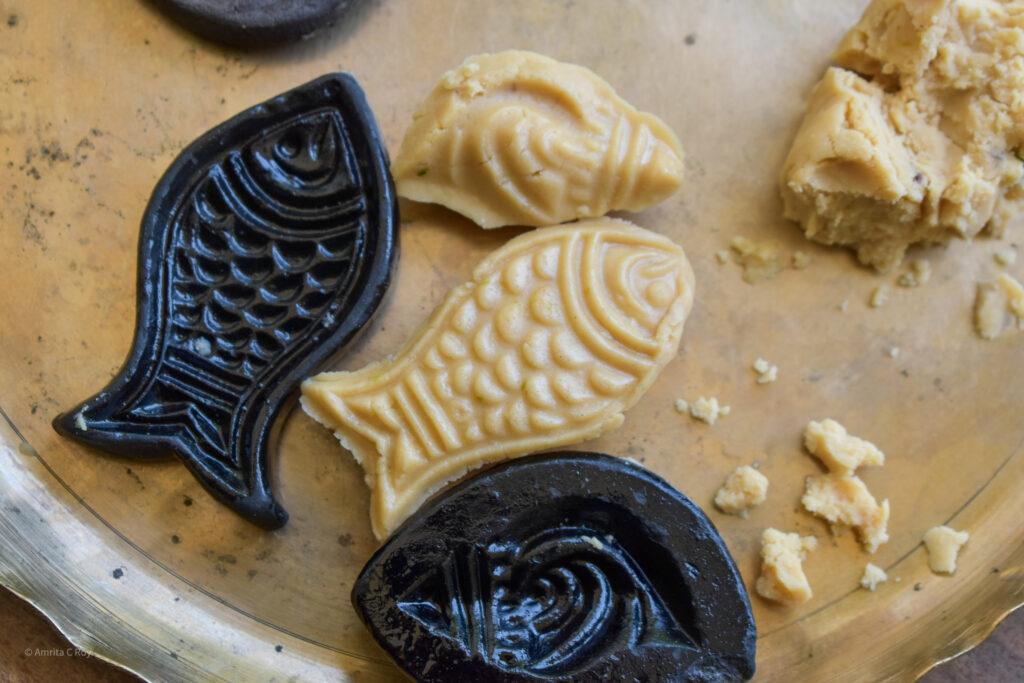
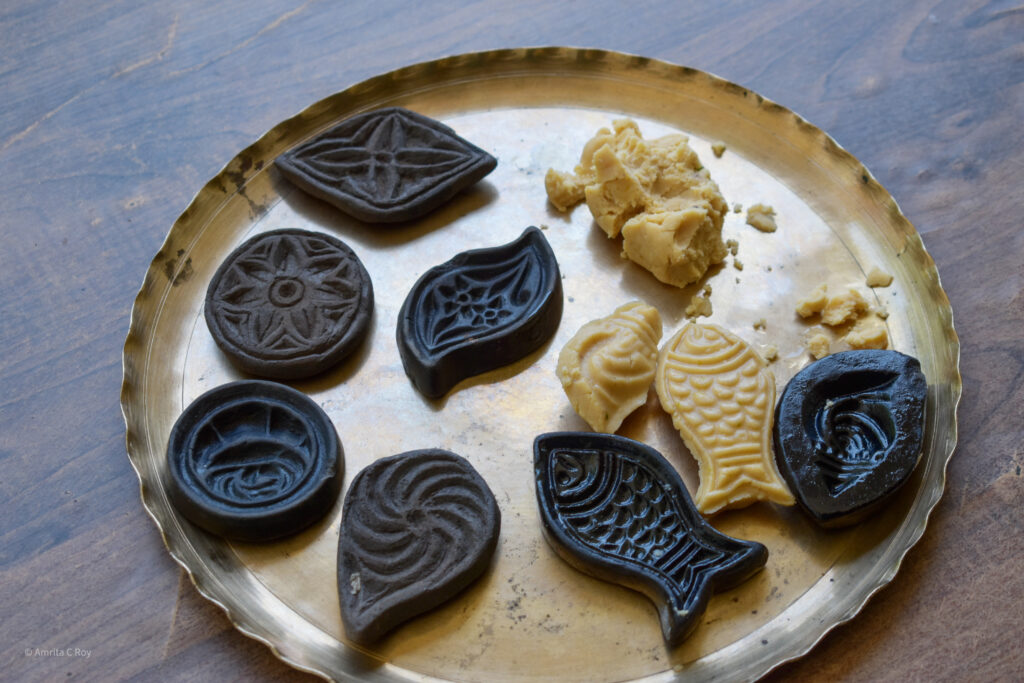
Wonderful article!
I wanted to let the author know that while I was posted in Dhaka, I collected over 20 amsatta chaanch made of stone. These are currently housed in our apartment in Kolkata. These are of remarkable diversity in terms of size, shapes and intricacy of patterns. The biggest one I have is 10 inches in diameter. It was a stone plate that was converted into a amsatta chaanch.
In addition to this, I have one chaanch (about 6 inches diameter) made by my maternal grand-mother.
Let me know if you are interested, and I will be happy to share some images.
Regards
Shumon Sengupta
[email protected]
Hi Shumon, thanks so much for your reply and the objects you shared sound incredible. We will write to you from the Museum email. Thank you!